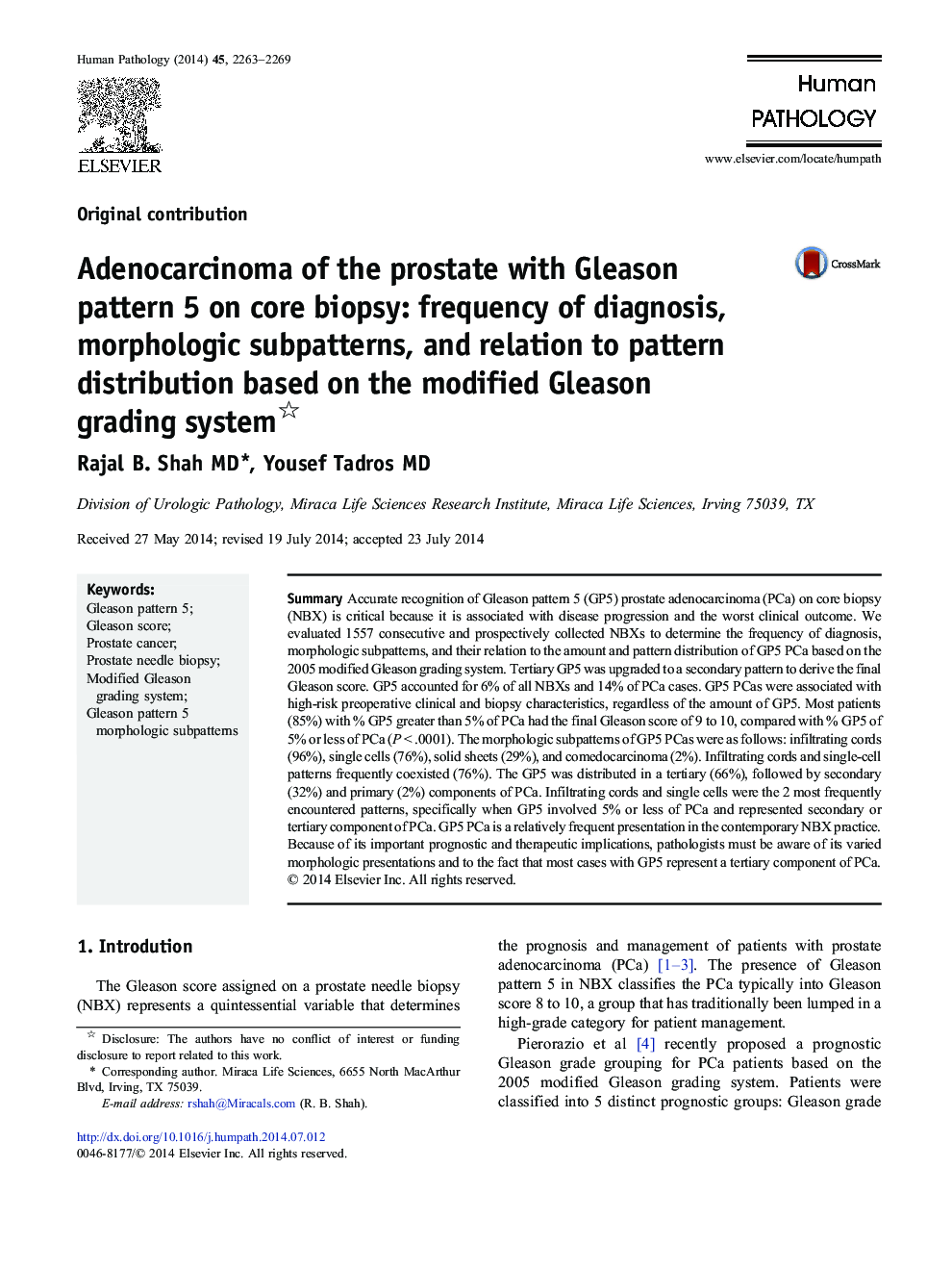| Article ID | Journal | Published Year | Pages | File Type |
|---|---|---|---|---|
| 4133331 | Human Pathology | 2014 | 7 Pages |
SummaryAccurate recognition of Gleason pattern 5 (GP5) prostate adenocarcinoma (PCa) on core biopsy (NBX) is critical because it is associated with disease progression and the worst clinical outcome. We evaluated 1557 consecutive and prospectively collected NBXs to determine the frequency of diagnosis, morphologic subpatterns, and their relation to the amount and pattern distribution of GP5 PCa based on the 2005 modified Gleason grading system. Tertiary GP5 was upgraded to a secondary pattern to derive the final Gleason score. GP5 accounted for 6% of all NBXs and 14% of PCa cases. GP5 PCas were associated with high-risk preoperative clinical and biopsy characteristics, regardless of the amount of GP5. Most patients (85%) with % GP5 greater than 5% of PCa had the final Gleason score of 9 to 10, compared with % GP5 of 5% or less of PCa (P < .0001). The morphologic subpatterns of GP5 PCas were as follows: infiltrating cords (96%), single cells (76%), solid sheets (29%), and comedocarcinoma (2%). Infiltrating cords and single-cell patterns frequently coexisted (76%). The GP5 was distributed in a tertiary (66%), followed by secondary (32%) and primary (2%) components of PCa. Infiltrating cords and single cells were the 2 most frequently encountered patterns, specifically when GP5 involved 5% or less of PCa and represented secondary or tertiary component of PCa. GP5 PCa is a relatively frequent presentation in the contemporary NBX practice. Because of its important prognostic and therapeutic implications, pathologists must be aware of its varied morphologic presentations and to the fact that most cases with GP5 represent a tertiary component of PCa.
